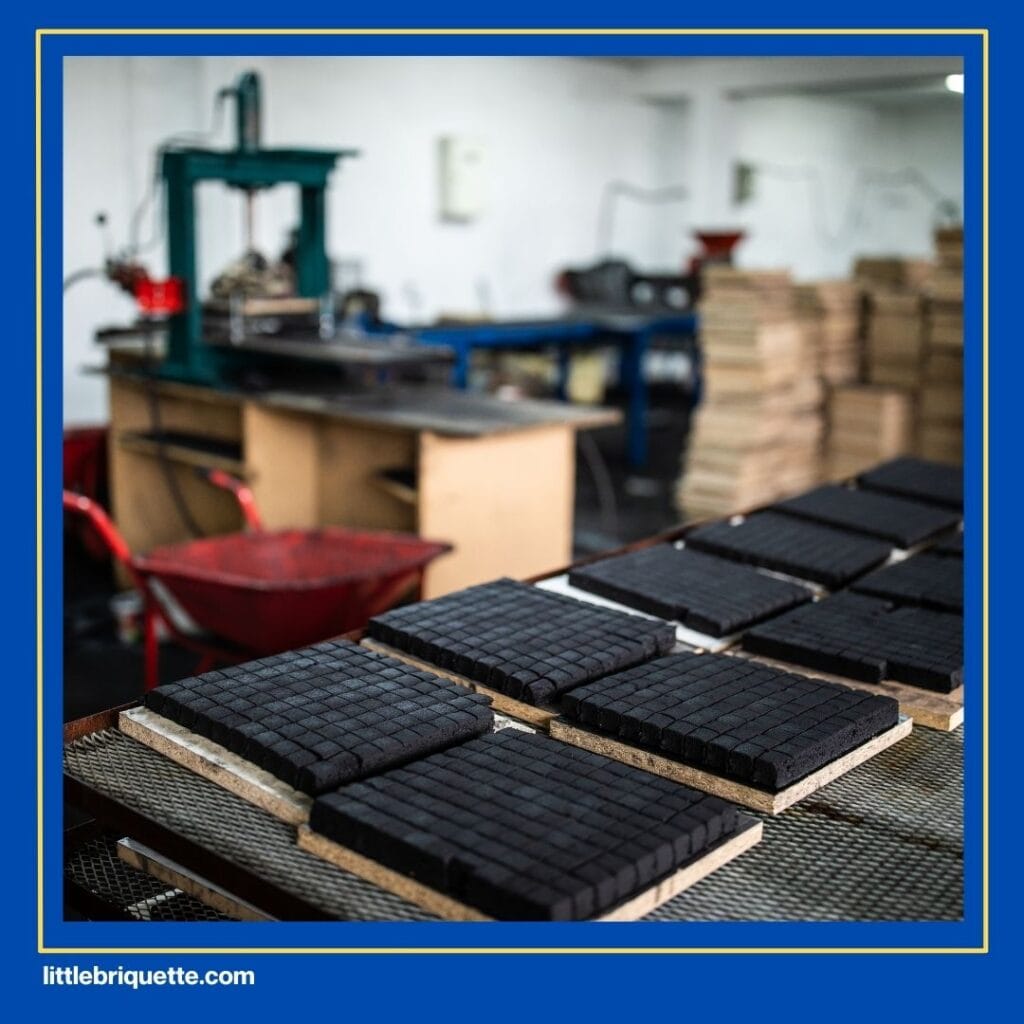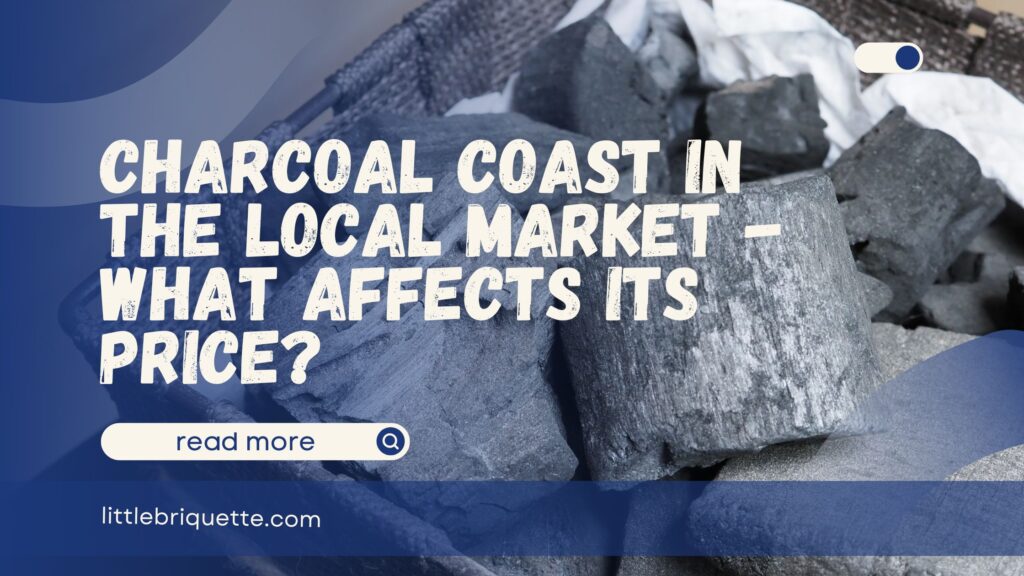The price of coconut charcoal in the local market often experiences fluctuations influenced by various factors, making it important for consumers and producers to understand what actually affects its charcoal coast. The popularity of coconut charcoal continues to rise, both among BBQ enthusiasts and as an eco-friendly fuel source, making it a highly sought-after commodity.
However, the unpredictable price changes can pose a challenge, both for consumers who want to get the best price and for producers who need to adjust production costs. By understanding these factors, it is hoped that we can be more prudent in dealing with the dynamics of the coconut charcoal market.
Read Also: Hookah Less Harsh, How to Enjoy a Softer Sensation
Factors Affecting Charcoal Coast in the Local Market
The price of coconut charcoal, which is increasingly in demand across various sectors, is influenced by several factors that determine its cost in the local market. Each factor plays a crucial role in determining the charcoal coast, and a deep understanding of these factors will help us respond more wisely to market changes.
Availability of Raw Materials

The availability of raw materials is one of the primary factors that affects the price of coconut charcoal. The main raw material, coconut shells, is highly dependent on coconut production in certain regions.
Indonesia, as one of the largest coconut-producing countries, serves as the main supply center for coconut charcoal production. The availability of coconuts can be influenced by several factors, such as harvest success and weather conditions that support coconut growth. If coconut production decreases, either due to natural factors or plant diseases, the supply of coconut shells will be limited, directly impacting the price of coconut charcoal.
The coconut harvest season also affects the price of this raw material. When the harvest season is abundant, the price of coconut shells tends to remain stable or lower due to the large supply. However, during dry seasons or when coconut supply decreases, the cost of raw materials will rise, which in turn increases the price of coconut charcoal. Therefore, local producers need to ensure a sustainable supply by properly managing coconut resources and diversifying raw material sources to maintain production even if supply disruptions occur.
Production Process and Technology

The use of modern technology in coconut charcoal production, such as advanced carbonization ovens, requires a significant initial investment but offers benefits in terms of efficiency and quality. Compared to traditional methods that rely more on labor and time, modern technology tends to be faster, produces higher-quality charcoal, and can process more raw materials in a shorter period. However, the investment and maintenance costs of this equipment increase production costs, which ultimately affect the price of coconut charcoal in the market.
On the other hand, more traditional production processes may incur lower operational costs but can be more time-consuming and labor-intensive. Manual coconut charcoal production often involves many workers and longer processing times to achieve optimal results.
Nevertheless, the use of more efficient technology can reduce labor costs and increase production scale, allowing producers to adjust prices based on market demand without sacrificing quality. Efficiency in the production process is key to maintaining competitive prices in the local market.
Market Demand as a Factor in Charcoal Coast

An increase in demand from various industries, such as BBQ, manufacturing, and the energy sector, often leads to price surges. For example, summer or specific times like BBQ festivals can significantly boost coconut charcoal consumption, impacting price stability. Higher demand from other industries, such as the energy sector transitioning to eco-friendly fuels, can also cause supply shortages, triggering price hikes.
Additionally, global trends in coconut charcoal consumption play a role. Countries increasingly focused on sustainability and the use of environmentally friendly products are driving demand for coconut charcoal. Many consumers prefer this product because it is considered more eco-friendly compared to traditional wood charcoal. On the other hand, the influence of seasonal trends or major events can also impact demand in a short period, meaning producers need to be prepared to respond to sudden demand surges and adjust prices accordingly to the available supply.
Transportation and Distribution Costs

Transportation and distribution costs are another significant factor influencing the charcoal coast in the local market. Shipping from producers to local markets and exports can increase the overall product cost. The distance between the production site and the target market plays an important role in determining transportation costs. If coconut charcoal needs to be shipped to international markets, high shipping costs, especially with fluctuating fuel prices, can impact the retail price in the local market. Inefficient logistics infrastructure in some regions can also exacerbate the situation, adding distribution costs and making the price more expensive.
Additionally, external factors such as rising fuel prices and changes in transportation policies can affect distribution costs. When fuel prices increase, shipping costs will rise, which directly impacts the price of coconut charcoal.
Producers and distributors need to account for changes in transportation costs when setting product prices to maintain the desired profit margin. With proper management, transportation costs can be minimized, but it remains a challenge in keeping prices affordable for consumers.
Competition in the Local Market

Competition in the local market is the final factor affecting the charcoal coast. In a highly competitive market, both large and small producers will compete to offer products at more attractive prices. The marketing and promotional strategies used by producers can directly affect prices, as they may lower prices to attract customers or increase sales volume. Additionally, large producers with better economies of scale often offer lower prices, while smaller producers may struggle to compete without sacrificing their profit margins.
Competition can also lead to product innovation, such as offering coconut charcoal with different quality or packaging, which can affect the price in the market. At the same time, high levels of competition may encourage producers to maintain quality while reducing production costs to remain competitive. This can result in more stable prices but also requires producers to constantly improve efficiency in all aspects of production and distribution.
Read Also: What’s in Hookah Coals? Investigating the Ingredients and Risks
Affordable and High-Quality Coconut Charcoal Briquettes
As we know, Indonesia is one of the top coconut producers. Therefore, many other countries purchase coconut charcoal briquettes from Indonesia. The largest company producing high-quality coconut charcoal briquettes in Indonesia is Little Briquette. Little Briquette is able to offer the best and purest coconut charcoal briquette products. To get affordable prices, you can contact the admin number here.

